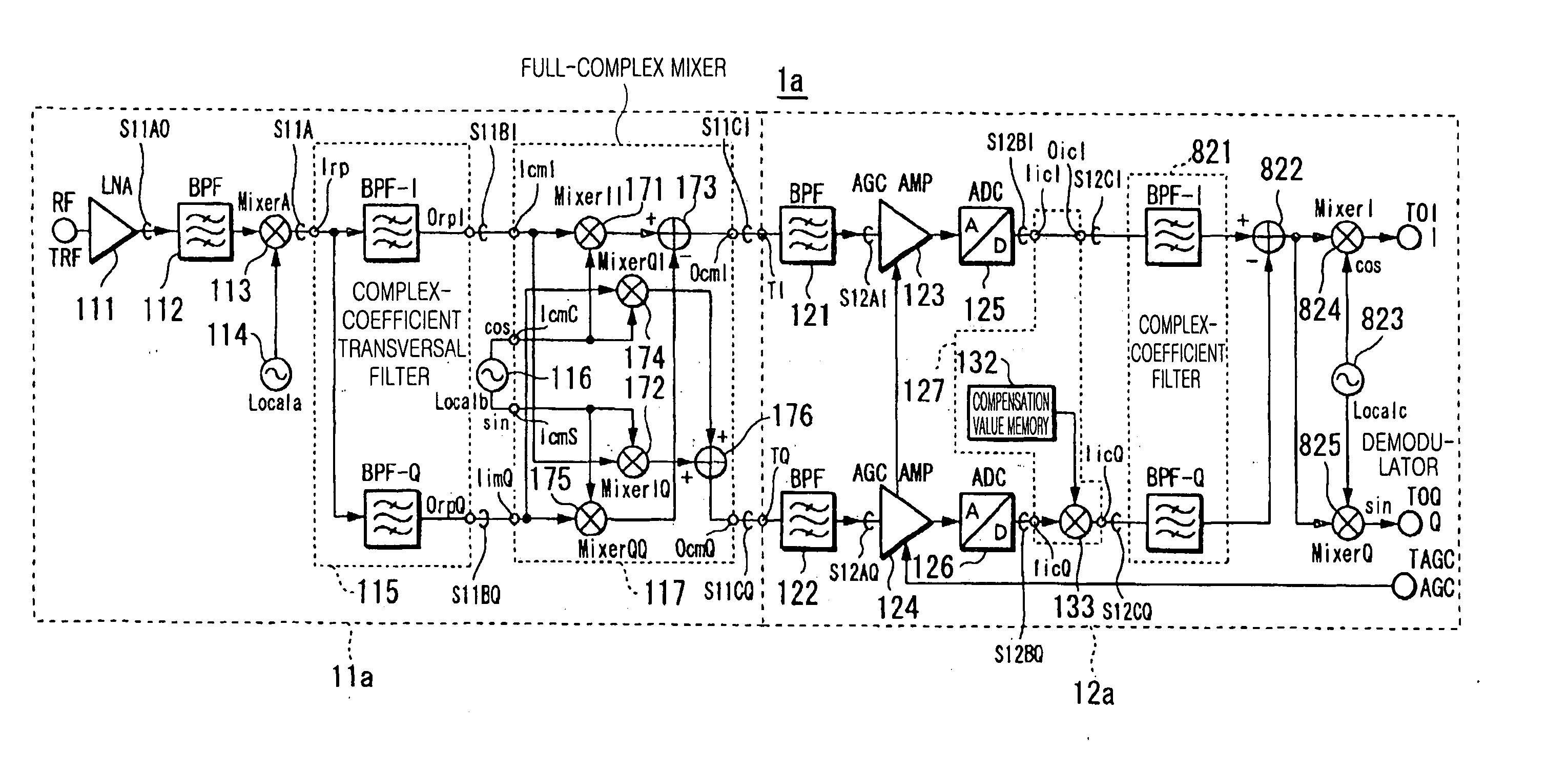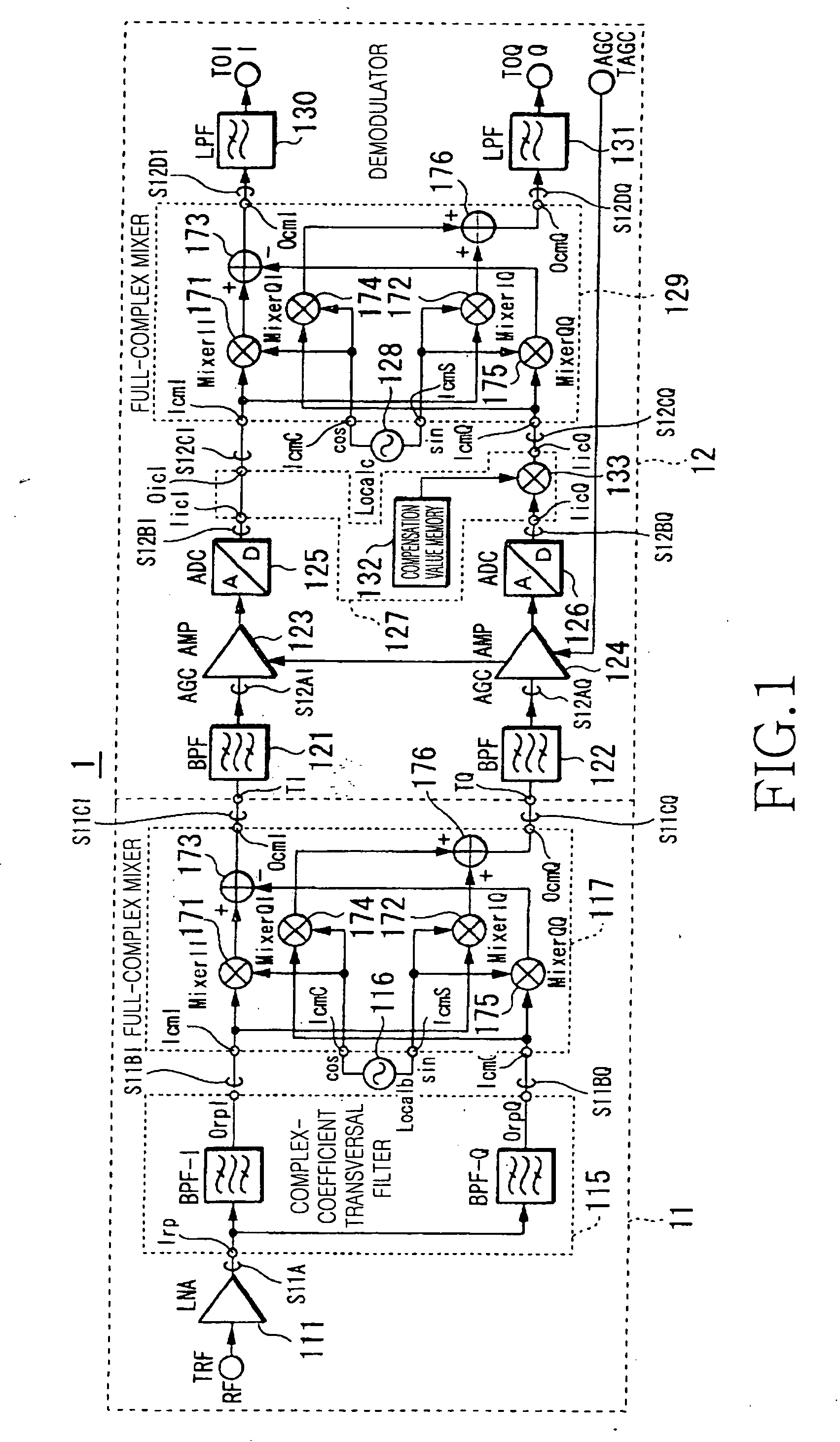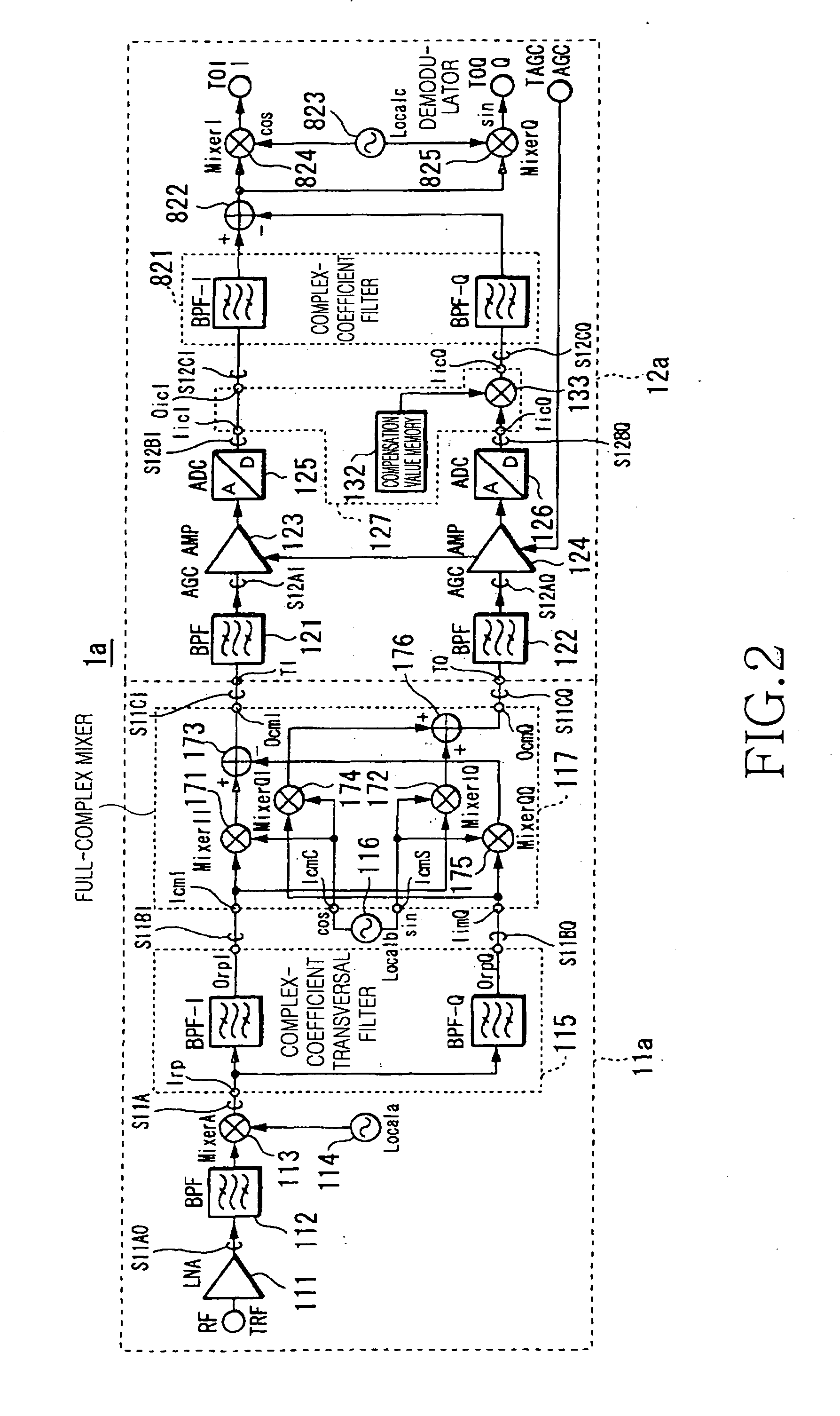Downconverter and upconverter
a technology of upconverter and downconverter, which is applied in the direction of demodulation, electrical apparatus, transmission noise suppression, etc., can solve the problems of inability to meet the associated requirement specification, low-if scheme cannot be applied, and circuit size significantly increases, so as to reduce power consumption, improve the error vector magnitude (evm), and reduce the effect of power consumption
- Summary
- Abstract
- Description
- Claims
- Application Information
AI Technical Summary
Benefits of technology
Problems solved by technology
Method used
Image
Examples
first embodiment
[0418] V. First Embodiment of Downconverter of Low-IF Scheme
[0419] Next, a first embodiment of a downconverter of a low-IF scheme in accordance with the present invention will be described with reference to the accompanying drawings.
[0420]FIG. 25 is a block diagram illustrating a structure of a downconverter 4 of the low-IF scheme in accordance with an embodiment of the present invention. The downconverter 4 is similar to that of FIG. 19. However, the structures and operations of an IF generator 41 and a baseband generator 42 are different from those of the IF generator 31 and the baseband generator 32 in the downconverter 3 corresponding to the example of the third basic structure.
[0421] Next, the downconverter 4 in accordance with this embodiment will be described with reference to the accompanying drawings.
[0422] The IF generator 41 is different from the IF generator 31 corresponding to the example of the third basic structure, in that the IF generator 41 uses a complex-coeffi...
second embodiment
[0435] W. Second Embodiment of Downconverter Based on Low-IF Scheme
[0436] Next, a second embodiment of the downconverter based on the low-IF scheme in accordance with the present invention will be described with reference to the accompanying drawings.
[0437]FIG. 26 is a block diagram illustrating a structure of a downconverter 5 based on the low-IF scheme in accordance with an embodiment of the present invention. The downconverter 5 is similar to that of FIG. 25. However, the structure and operation of a baseband generator 52 are different from those of the baseband generator 42 of the downconverter 4 based on the first embodiment of the present invention. Next, the downconverter 5 in accordance with this embodiment will be described with reference to the accompanying drawings.
[0438] The baseband generator 52 is different from the baseband generator 42 of the first embodiment in that the switch 140 is deleted and an AGC amplifier 124, an ADC 126, a mixer-I 141, a mixer-Q 142, and L...
third embodiment
[0445] X. Third Embodiment of Downconverter Based on Low-IF Scheme
[0446] Next, a third embodiment of the downconverter based on the low-IF scheme will be described with reference to the accompanying drawings.
[0447]FIG. 27 is a block diagram illustrating a structure of a downconverter 6 based on the low-IF scheme in this embodiment. The downconverter 6 is similar to that of FIG. 25. However, the structure and operation of a baseband generator 62 are different from those of the baseband generator 42 of the downconverter 4 based on the first embodiment of the present invention.
[0448] Next, the downconverter 6 in accordance with this embodiment will be described with reference to the accompanying drawings. The baseband generator 62 is different from the baseband generator 42 of the first embodiment in that the complex-coefficient SAW filter 340 is replaced with a complex-coefficient SAW filter 350 and the adder 139 and the switch 140 are deleted.
[0449] An output terminal of the compl...
PUM
 Login to View More
Login to View More Abstract
Description
Claims
Application Information
 Login to View More
Login to View More - R&D
- Intellectual Property
- Life Sciences
- Materials
- Tech Scout
- Unparalleled Data Quality
- Higher Quality Content
- 60% Fewer Hallucinations
Browse by: Latest US Patents, China's latest patents, Technical Efficacy Thesaurus, Application Domain, Technology Topic, Popular Technical Reports.
© 2025 PatSnap. All rights reserved.Legal|Privacy policy|Modern Slavery Act Transparency Statement|Sitemap|About US| Contact US: help@patsnap.com



